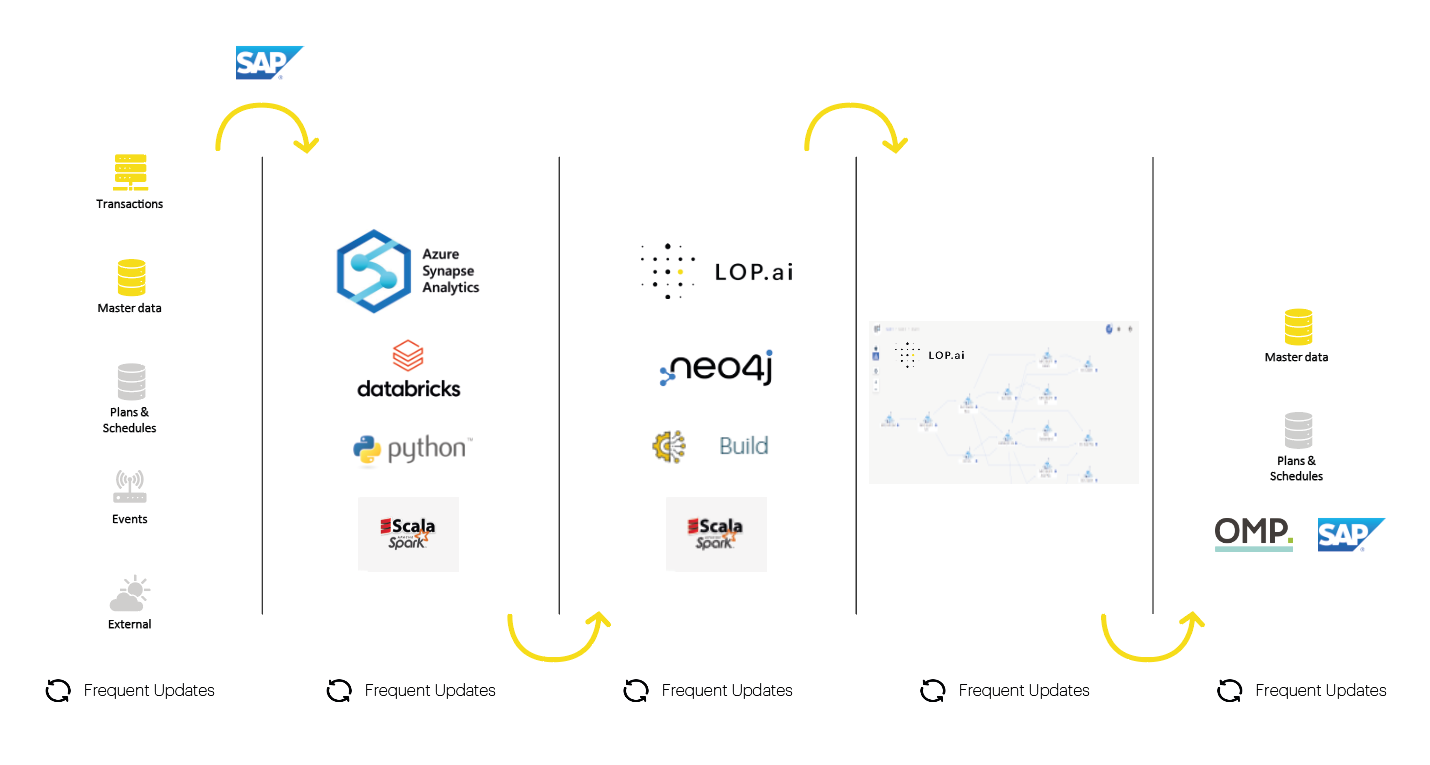
How do you build a digital supply chain twin?
Build your end-to-end digital supply chain twin for network visibility via crawling algorithms and process mining to establish true material flows. Learn how artificial intelligence (AI) and machine learning (ML) can help you rise to the challenge of creating end-to-end network visibility in your supply chain.

The importance of AI & ML in data harmonization
The importance of AI & ML in data harmonization is in helping you to rise to the challenge of creating end-to-end visibility in your supply chain.
There are multiple factors that complicate end-to-end supply chain visibility. However, in most cases, it starts with legacy. It’s typically not possible to start out with a blank slate. And, as research analysts tell us, the average organization has three to four ERP systems. Because of the way these organizations grew historically, they have created islands of information. Each planning system thus has its own data, based upon which it offers solutions.
The initial challenge is to gather all this data, which is scattered across platforms, and create a harmonized representation of the supply chain. Here is where AI & ML already kick in using fuzzy matching algorithms to match and structure records across the platform that are not necessarily referred to in the same manner.
The advantage of having access to smart algorithms is that the interconnectivity is being mapped out automatically. And using the aforementioned probabilistic (fuzzy) matching to link flows across the supply chain, we can overcome the sole reliance upon the accuracy of the master data. This way the AI & ML connect the dots throughout the supply chain linking contract manufacturers, suppliers and customers, creating the end-to-end visibility you need.
This automation has many advantages. It’s more accurate, it’s dynamic, and you have the possibility to analyze how your supply chain variables change over time. This restructuring of data and tracking of variables can then again be used to feed more accurate information back into your ERP systems. Then, on top of being able to “keep your finger on the pulse of your supply chain” at all times, you have access to clever analytics that allow you to simulate a multitude of situations.
By having continuous access to the latest, accurate information based on the demonstrated performance, you have the capability to become more resilient, allowing for a faster and more accurate response to change. How we react to change does not only determine if we survive but also whether we can thrive.
→ By implementing AI & ML into your supply chain, you can overcome the sole reliance upon the accuracy of the master data and create connected end-to-end visibility based on demonstrated performance.
Moving from “unknown uncertainty” to “known variability”
Axon can analyze vast quantities of historical data to surface the demonstrated performance of your supply chain, especially of the parameters used by planning systems. Not only do we provide the most likely value for these parameters, very importantly, Axon also surfaces the variability.
In other words, the analysis performed in Axon provides a better value to feed to deterministic planning tools, and it also allows organization to make risk-based decisions by providing a complete analysis of the variability. The obvious value to use in the deterministic planning systems is the mode because it is the most frequent value. However, choosing the maximum for supplier lead time, for example, can ensure that the materials are never delivered late. This is at the cost of higher inventories because most of the time the supplier will deliver earlier than the expected delivery date.

Axon customers report getting much more realistic plans out of the planning systems, which provides greater tangible results, such as reduced inventory. Another intangible result is the increased confidence in the results generated by the deterministic planning system, which translates into greater adoption.
Equally important is the tracking of these variables through constant analysis to detect any trends.

The moment a significant deviation or trend is detected, both the business process improvement and the planning team can be notified. If detected early enough, the trend can be reversed; if the trend effect is negative, or accelerated, the trend effect is positive.
Above all else, Axon provides a much better understanding of where variability is experienced. Because Axon also provides value stream analysis (VSA), you can identify opportunities for improvement immediately, as well as understand the benefits and limitations of the improvements.

→ By helping you move from a state of “unknown uncertainty” to “known variability”, and feeding smart parameters to traditional deterministic tools, Axon provides the first step in achieving resilient supply chain planning.



